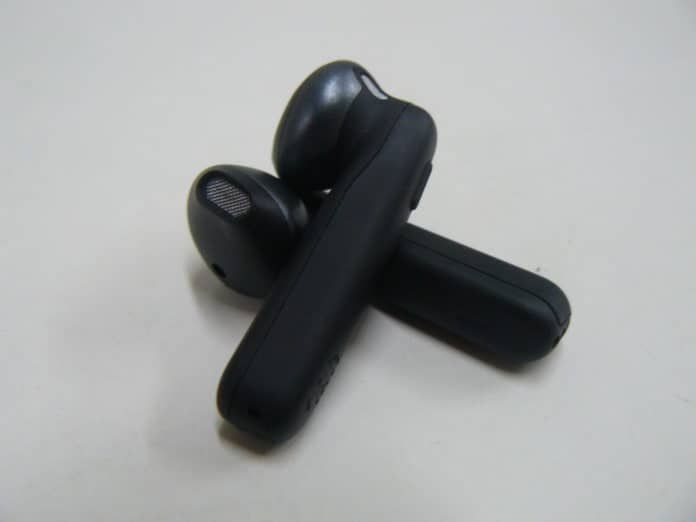Oh look, JBL made a pair of Airpods. I’m kidding obviously, but when you first take a look at the JBL Tune 225 TWS, it doesn’t seem like it. The 225 is a new line of wireless earbuds from JBL, and yes, they look precisely like Airpods. I just want to get that comparison over with here at the very beginning so we can tackle the Tune 225 properly. It’s just a strange decision from JBL, as they’ve proven to be a separate brand all on their own. Why try to borrow from the likeness of a less than a superior product. Popularity, most likely, as the Airpods are still the most popular wireless earbud among the masses, and JBL is significant competition in the market. It’s no secret that JBLs sound is superior to Apple, but can the Tune 225 convert the masses to their side?
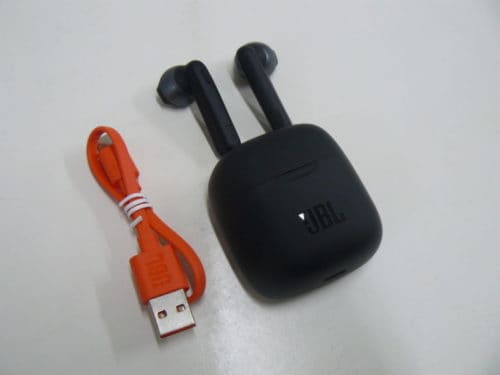
What You Get
The main component of a true wireless earbud(besides the earbud itself) is its charging case. It’s a small square container that should fit firmly in your pocket. Along with the charging case are its USB-C charging cable, warranty, and safety sheet.
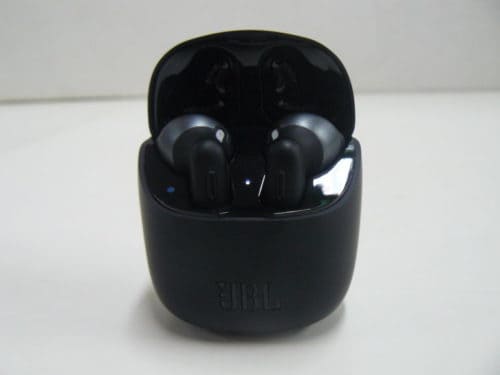
Look and Feel
For the final time in this review, the Tune 225 resembles Airpods, and it’s confusing to me why they’d choose this aesthetic over anything. I guess they want to appeal more to the masses, but this isn’t a very subtle way to go about it. Everything down to its stems is an Airpod, its shape, shell, and grill. Do they feel any different? Not exactly. They hang off your ear as Airpods would, which is my least favorite fit for any earbud. They feel secure in some way, but the buds have this awkward sense of never being worn correctly. Pushing the single button on each earbud causes you to push the bud further in your ear, which creates a little pain as the grill nozzle makes contact with your ear canal. The stems are especially a random feature, as they can be a bit distracting and found myself adjusting them often.
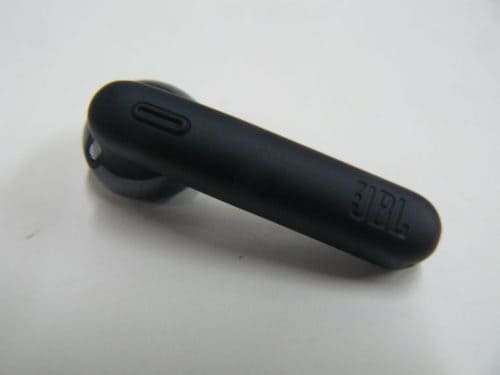
Design and Functionality
Inside, these buds are a standard 12mm driver. No special armatures or voice coils, just a driver to blast signal into your ear at a nominal amplitude. In terms of functionality, the Tune 225 keeps things rather simple. No individual gestures to cycle through different features like other JBL wireless earbuds have. The Tune 225 has one button on each bud, the left for skipping tracks, and the right being for play/pause and picking up calls. These buttons are relatively responsive, and I have no issue with their functionality, as things are kept rather simplistic.
Bluetooth
Thankfully, the Tune 225 features Bluetooth 5.0, which makes for a more excellent range and bandwidth. I was able to leave my device at my desk and walk around without losing any signal.
Battery
The Tune 225 TWS comes with a 22mA lithium-ion battery with a charge of 3.85V. Each bub gives you a combined battery life of 5 hours, while the charging case supports around 20 hours. So combining the two should give you a total of 25 hours of playtime. This battery is rather little compared to other true wireless earbuds on the market but should be enough to last you a long car or train ride. I might object to suggesting a plane ride due to the earbuds not being very self-isolating, which might put off some.
Output
One of my main issues with earbuds of this design is that they don’t precisely output that powerful of a signal, making you blast the volume that could cause some hearing damage with long listening durations—the Tune 225 fits in this category. These drivers have a sensitivity of 1kHz at 1mW 105dB, with an impedance of 32 Ohms, and you’ll receive a frequency response of 20Hz-20kHz. A More decent output quality than its primary competitor (of which I will not name again), but still doesn’t contain the amount of drive you might want in more aggressive tracks.
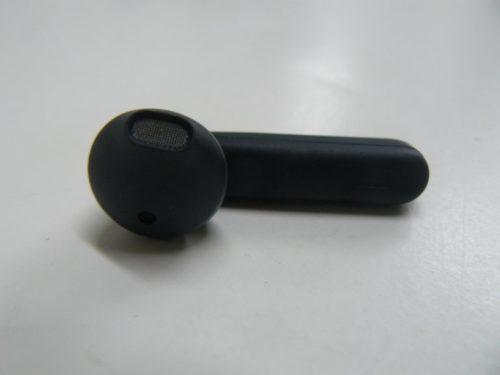
Soundstage
For the most part, Tune 225 TWS has a suitable soundstage for its design, and even breaks the mold in some regards. It has a shallower overall field, but spatial imaging does the best job it possibly can to make sure each section is clear and individualized. The 225 tries its best to expand as far as it can while still being accurate to the mix. Left/right stereo patterns occupy the space they need to without being jumbled into the “one sound” other earbuds have. In some Jazz tracks, you can faintly make out a space of air between instrumentations before they come together, trying their best to layer over each other in equal amplitude. It works with quieter tracks, but more eager ones have a bit of trouble sifting through the messiness.
Low End
The Tune 225 has this saying on the box: “Pure Bass.” After my critical listening sessions with these earbuds, I couldn’t tell you what that means, not a clue. What I can tell you about the bass is that there isn’t a strong response from it most of the time. The low end lacks any significant punch or feel and comes off as restrictive in some regards. However, they never make a mess of things either, instead opting to remain quite clean and neutral. This tonality becomes more apparent in bass focused tracks, as the lows get to show their smoothness here. They don’t support those buttery, growling textures, that make these track a real treat but are still well defined in their own right.
Mids
There’s undeniably something missing from the mid-range, as there is a lack of a significant body to instrumentations, and performances never feel like they can adequately stand out. However, there is a surprising clarity in the vocal ranges, as the bands float with a spacious glow and tight accuracy. The separation of the vocals is what makes them feature the highest fidelity the sound field receives. Otherwise, other instrumental elements sound thin and lacking in any significant power.
Highs
To my delight, the Tune 225 offers some notably resonant highs. They lack any sparkling texture and don’t feature the smoothest response. There are even some harshness and sharp frequencies in higher bands, but certain elements are still allowed to shine. Female vocal performances like that of Enya have an airy quality that’s perfectly fit for a timbre such as hers. There’s a perceivable boost in the mid highs, which is where I noticed the harshness the most, but the gain definition is mostly balanced.
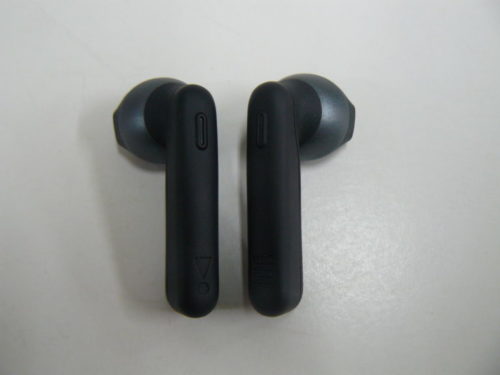
Summary
If I had to choose between the JBL Tune 225 TWS and the other product that shall not be named again, it’s a no brainer as far as I’m concerned. The 225 only goes for $99.95, an affordable price that should convince even a novice to dump its competitor. Its got some major hiccups but will benefit the casual listener in more ways than the other model that shares its likeness.
Pros and Cons
Pros: Bluetooth, good separation, affordable
Cons: Bland design, awkward fit, some harshness
JBL Tune 225 TWS Available from Audio 46
Check out how these earbuds rank on our ranking tool!
MAJORHIFI may get a commission from retail offers.
Compare the ranking of various headphones, earbuds and in-ear monitors using our tools.
Discuss this, and much more, over on our forum.
---MAJORHIFI may receive commissions from retail offers.


